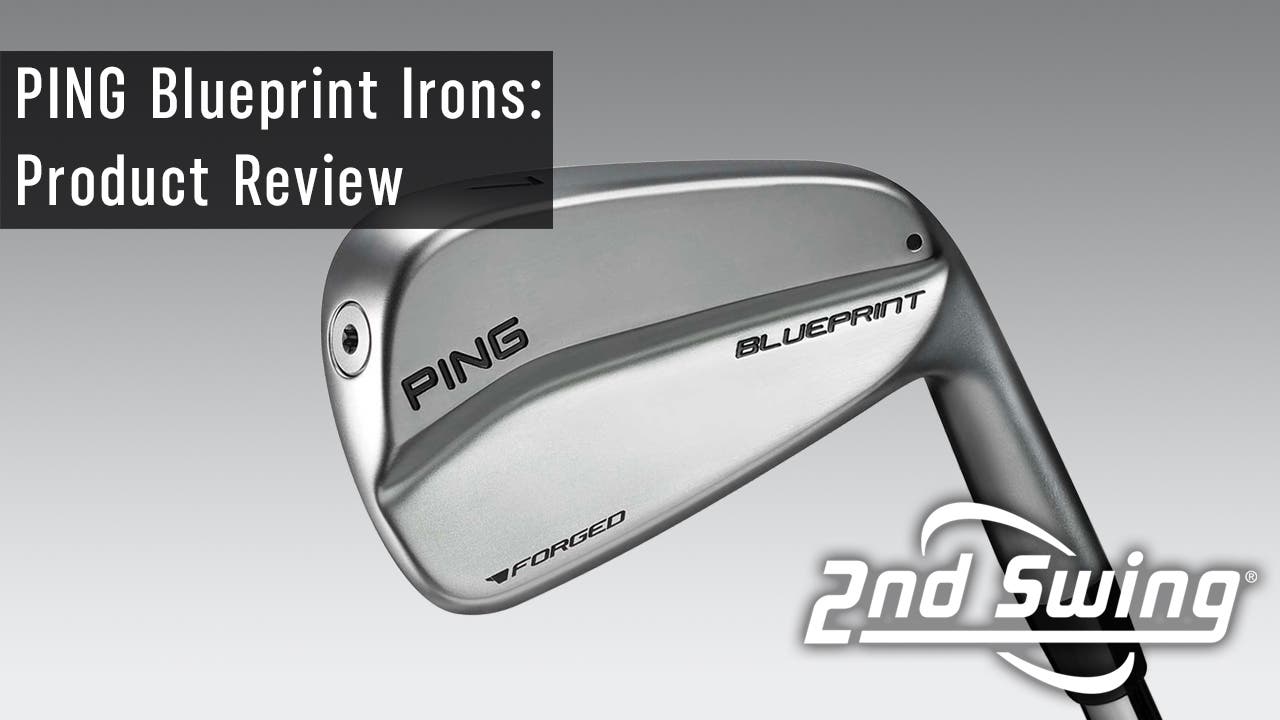PING Blueprint Irons: Built for Shotmakers

PING Blueprint Irons: Built for Shotmakers
May 30, 2019
By Drew Mahowald -- 2nd Swing Staff Writer
PING has risen to the top of the ranks in the golf industry, thanks in large part to its production of highly-forgiving clubs that are beneficial for every level of golfer. With the exception of a few iron sets, PING has largely engineered clubs for a large demographic of golfers.
During its most recent launch, PING released the Blueprint irons to the public, one of those iron sets that has not been engineered for a large demographic of golfers. Rather, PING targeted highly-skilled ball strikers with the Blueprint irons. This idea was born after conversations between engineers and members of PING’s staff of tour professionals.
“It definitely started with a select group of our Tour staff,” said Ryan Stokke, Director of Engineering at PING. “Louis Oosthuizen was one of our main sources of feedback. We also talked to Tony Finau and Bubba Watson. The focus became building an iron design where these guys could really create their own shots and be able to flight the ball how they wanted.”
The result of this discussion became a goal. PING wanted to develop a set of irons that could give golfers total control over the shape of their shots. Some golfers are comfortable playing a low draw, while others prefer hitting a high fade. Several others want to be comfortable hitting many different trajectories.
PING created the Blueprint irons to allow for any and all shot shapes to be created. As PING has said, these irons are built for shotmakers, or players that can comfortably swing in a way that shapes the ball the way they want it to.
From an appearance standpoint, the Blueprint irons are the smallest PING has ever created. They are 11 percent narrower than the company’s previous marquee blade option, the iBlade irons. Additionally, the Blueprint’s blade length is three percent shorter. Stokke adds that golfers will quickly notice the minimal offset, which only emphasizes the incredible workability available with the Blueprint irons.
“The Blueprint is definitely our smallest iron in every aspect of the club,” Stokke said. “Visually, golfers will notice the minimal offset. In general, there’s about 40 percent less offset in the Blueprint versus the iBlade. We really focused on what characteristics can help players with shotmaking.”
PING used a four-step forging process and over 50 key inspections to construct the Blueprint irons out of 8620 carbon steel. This type of construction, combined with the machined clubface and grooves much like those of a wedge, provide superb feel and sound at impact.
One word that is generally not used when describing a forged blade iron set is forgiveness. Most sets built like the Blueprint design contain essentially no forgiveness technologies whatsoever, forcing the player to provide 100 percent of the performance.
While the Blueprint irons are absolutely constructed for better ball strikers, it should be noted that each iron in the set includes additional tungsten weighting in both the toe and the heel. This concept of perimeter weighting is used often in game-improvement irons to improve stability at impact on off-center strikes.
“One of the elements of the design we really focused on was boosting inertia and forgiveness,” Stokke said. “We balanced that tungsten toe weight with added hosel weight. For this style of iron, that actually adds significant forgiveness and serves as perimeter weighting.”
It’s not a secret that PING produces exceptional game-improvement equipment for golfers of all skill levels. The company has been doing it for decades. But PING has maintained a staff of several highly-successful tour professionals because it also thrives in producing equipment for elite players. The Blueprint irons definitely fall into the latter category.
“The right players for the Blueprint irons is that player looking for the ability to hit different types of shots and flight the ball,” Stokke said. “They’re great for the player that can work the ball in different directions to better position themselves and those players that love to shape the ball to attack tucked pins.”
It shouldn’t come as a surprise that creativity and shotmaking drive the design of the Blueprint irons. The same set works for Oosthuizen, Finau, and Watson, each of whom have specific preferences when it comes to shaping the ball.
If you’re a consistent ball striker, chances are the Blueprint irons will also work for your preferred flight.